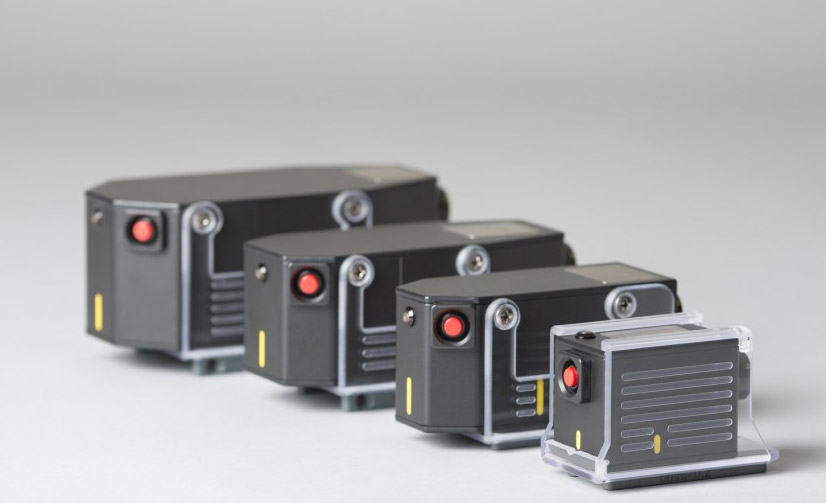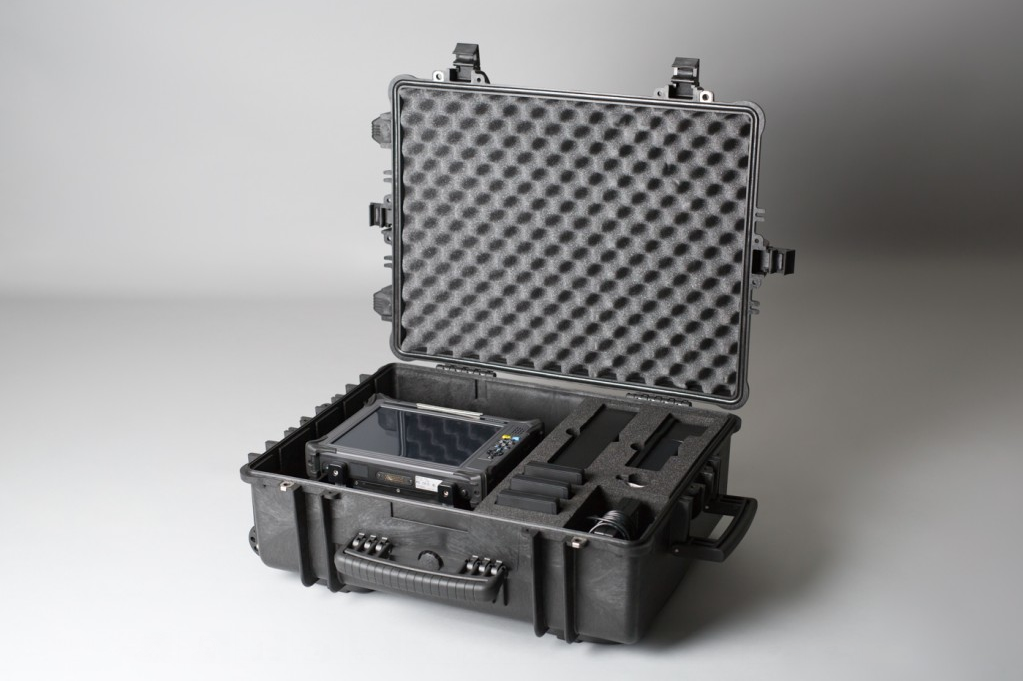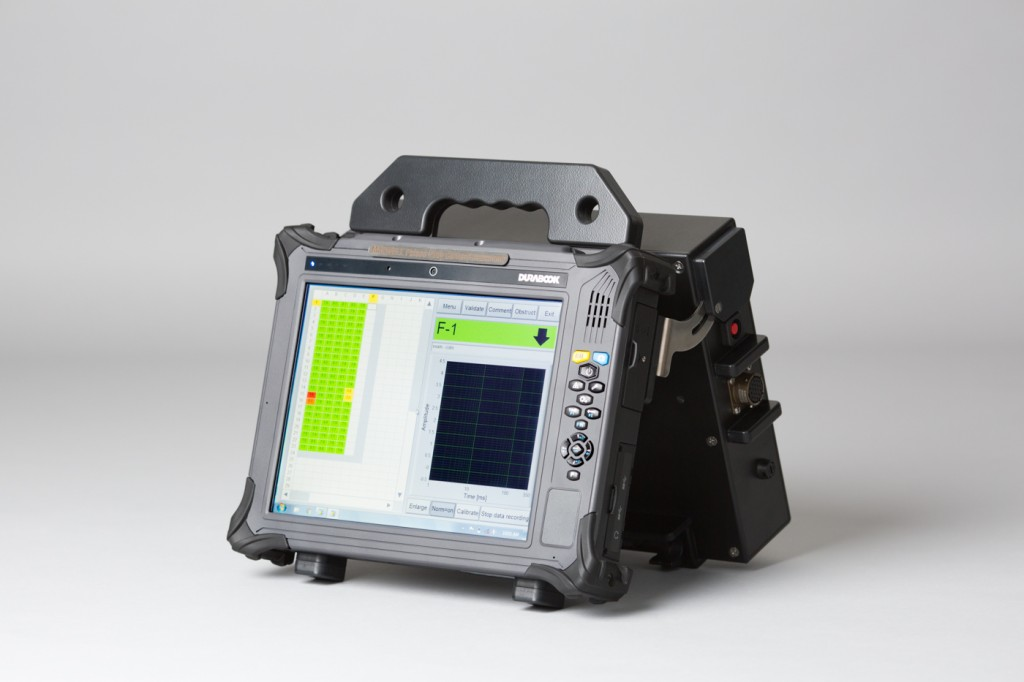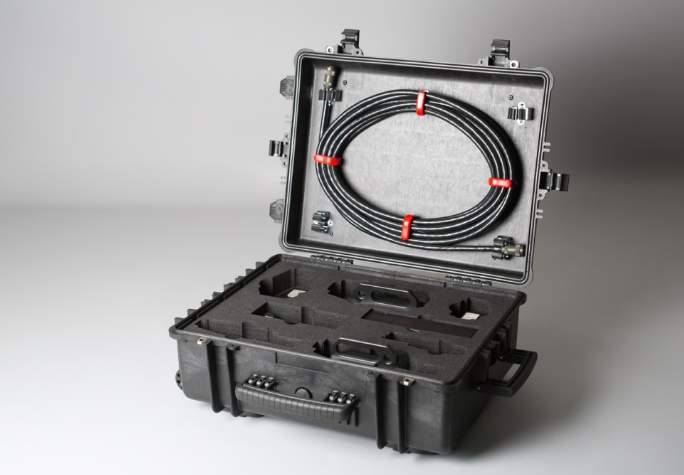Pulsed eddy current equipment (PECT)
Pulsed eddy currents have been used since the 90s at numerous chemical and petrochemical sites to monitor and track installations protected by lagging or fire protection.This technique has the advantage of giving a good assessment of the state of corrosion of an installation without the need for decoating, removing protection or setting up scaffolding, and of being coupling-free with a minimum of preparation. The equipment presented here is very easy to use, and features wizards that guide the user in the choice of probes and supports according to several parameters: pipe diameter, nominal thickness, lagging thickness, type of envelope, presence of wire mesh, etc...
SHOULD WE BELIEVE IN MIRACLES?
Pulsed eddy currents have been used since the mid-90s at numerous chemical and petrochemical sites to diagnose and monitor installations subject to corrosion. Since then, this technique has demonstrated its capabilities and limitations. This technique is interesting because it can detect generalized corrosion and erosion under thick layers of lagging or other coatings, without having to dismantle these protective layers. Nevertheless, this technique also has its own limitations linked to the physics of the phenomena involved: in particular, the type of corrosion and the volume of material corroded, as well as the resulting notion of measurement.
Pulsed eddy currents can be used to assess the volume of electro-magnetic metal under the probe's zone of influence. As a result, depending on the form of the corrosion, the impact on the volume of material will be greater or lesser, and therefore detectable or non-detectable. It's easy to see why pitting, localized corrosion and cankers are difficult to detect using this technique. The use of pulsed eddy currents must therefore correspond to the corrosion mechanisms suspected in the installation.

A REPRODUCIBLE METHOD
Pulsed eddy current has the advantage of not using a couplant like ultrasound. It is therefore a highly reproducible method, as long as the probe is positioned in the same place. It enables us to monitor the evolution of corrosion mechanisms in installations over time, without having to remove existing external protection. It also makes it possible to check, when a patch repair has been carried out for example, that corrosion is no longer evolving under the repair. This works very well whatever the materials used for the patch, including glass-fibre reinforced resins. As such, it is the only method to date capable of performing this assessment under these conditions.
POWERFUL EQUIPMENT
The MAXWELL system consists of a rugged industrial PC on one side, and an eddy current power module on the other. Each part has its own power supply and batteries. The
battery powering the Eddy Current module has a capacity of xxAh. This enables the probes to be powered at a rate that allows them to pass through lift-offs of up to 250 mm, and above all to measure metal thicknesses of up to 50 mm. This extends the range of applications to high-capacity reactors and pressure vessels.

VERY POWERFUL BUT VERY SIMPLE
MAXWELL software has been designed to be operational as quickly as possible. It therefore features a configuration wizard that suggests a choice of probes to suit the application. The operator simply needs to fill in a few fields corresponding to the necessary information, such as the nominal thickness of the component, the lift-off thickness to be traversed, the diameter of the pipe, the nature of the envelope if existing, and the software recommends the connection of a probe type and its corresponding support. The calibration phase is then extremely simple, enabling the operator to check his acquisition parameters. Ready to start inspection!
FOOLPROOF TRACEABILITY
During data acquisition, the raw eddy current signal is automatically recorded. This makes it possible to go back to a measurement on which there is doubt, to analyze the entire acquisition by a specialist and to validate it. Files are automatically archived and established according to site, component and inspection date. This also makes it possible to go back to a past inspection and immediately restart acquisition. Interesting for tracking the evolution of corrosion over time.
OWNING YOUR EQUIPMENT

You own your equipment completely. It comes with 4 probes covering most applications, spare batteries, spare cables and data analysis software. The software is loaded on the PC, but you can also load it on other remote PCs for analysis in the office, for example.
TECHNICAL SUPPORT
This equipment was designed by people in charge of inspection departments on production sites. These people have been using Pulsed Eddy Currents for years and decades under operating conditions. The interface is therefore optimized for site conditions: simplicity, ease and operability are the most appropriate adjectives. In addition, inspection department managers know their installations and the associated risks well. Their experience is vital in understanding corrosion mechanisms, critical areas and the points to be monitored to maintain operational conditions. The designers of this equipment can provide you with this help and support, even on site.




